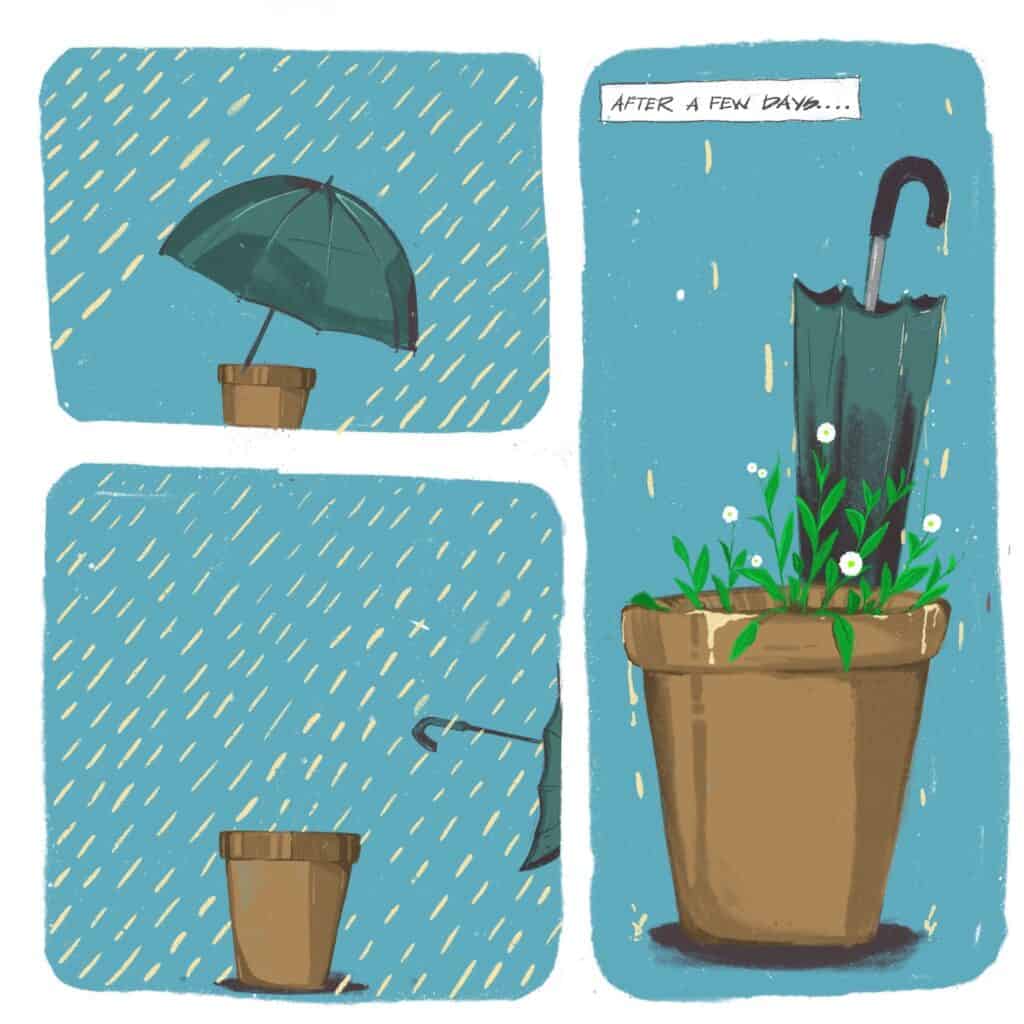
None of the parenting books prepare you for how often toddlers fall down and hurt themselves. And spoiler alert! It’s too frequent an occurrence. Recently, my son was jumping on the sofa when he fell (again) and bruised his knees (also again). My mother-in-law rushed to his side and began to wipe his tears, tenderly. She said the usual things we all do when we see someone we love in distress. We’ve all heard them before, and we’ve probably all said them before too: “Don’t cry.” “It’ll be okay.” “You’re so strong!”
I was pulled from my thoughts when a tiny wailing tornado landed in my lap. I looked down to find my son gazing up at me through his tears, requesting me to put a band-aid on his ‘boo-boo’. I resisted the urge to quell his pain by pulling a funny face. And for ten minutes we sat there in silence, with me holding both him and his sadness.
As psychologists do, I found myself curious about how my mother-in-law and I responded so differently to the same situation. I’ve noticed that human beings are always in a rush to dissipate sadness and disappointment. When someone allows us a glimpse of their distress, our immediate response is to tell them to push it away, to shrink it, or to ask them to look elsewhere where things are brighter. This makes sense, because it’s uncomfortable for us to see the people we love in pain. We also do this because we don’t know how to manage our own sadness.
As children, we’ve never been taught to sit with difficult feelings (If you have, good for you!). We grow up hearing so many messages that feeling sadness is ‘bad’ or ‘wrong’: If we’re disappointed at losing a game, we’re a sore loser. If we’re in pain because our best friend has moved schools, we should be happy for her. If we fail an exam, we have to push ourselves to do better the next time. Sadness is always an unwelcome visitor.
When we grow older, we continue to carry these messages. It feels like a monumental task to deal with difficult emotions, especially sadness. Disappointment, heartbreak and rejection are a part of being human, although they are painful. They can be even harder when we don’t know how to make space for our sadness. We may fear sadness or believe it is a personal failing and try to distract ourselves from it. We rush and move on or tell ourselves to ‘focus on the positive’.
And while influencers and self-help gurus may believe that being positive all the time is a bad thing, research shows otherwise. Avoiding negative feelings lengthens the period of ‘anticipatory anxiety’ or the fear of negative feelings. This means we tend to become hypervigilant about the emotions and situations that we are trying to avoid. Eventually the apprehension of impending negative experience becomes an awful experience in itself. So while avoiding negative feelings might give momentary relief, in the long run, it could leave us with worse apprehensions and unmanageable anxiety.
So what do we do instead of running away from our sadness? It seems odd, but accepting our negative feelings is actually what eases them. Difficult feelings exist because they carry important information about what is important to us. The existence of sadness means that something we value is being lost or transgressed. For example, sadness at the loss of a relationship also means the existence of care in that relationship. Disappointment at making a mistake during a presentation could mean that doing well at our job is important to us.
Of course acceptance is easier said than done. We have some suggestions on what could help:
1. Name it to tame it
Research indicates that simply naming a negative emotion can help produce calming neuro-chemicals in the brain. Labelling the emotion for what it is also eases off the pressure to fix it immediately. For those more creatively inclined you could also try and visualize the feeling you’re experiencing and represent it as a drawing.
2. Mindful self-observation
If you’ve ever tried a mindfulness meditation you’ll hear the phrase “calmly notice your thoughts and simply allow them to exist”. Mindful self-observation involves calmly being aware of the thoughts and feelings that visit you. It’s the subtle difference between the thought “Ah, I’m sad,” and “Oh no! How can I be sad about this! This is terrible! I must stop this feeling at once!”
3. Deliberate acceptance
For situations beyond our control, stress can be reduced to a great extent when we accept them. This sounds uncomfy, but trust me – it can feel like lifting a weight off our shoulders. This also allows us to work towards other things that are in our control.
All this to say – that sadness is a fundamental part of the human condition and fighting it and avoiding it can only make it worse. Feeling is what makes us human and despite what the self-help books would have you believe – we’re allowed to feel sad. I hope that I am able to impart the same wisdom to my son over the course of his childhood – That whenever he slips or falls, of course, band-aids and reassurances are available, but it is also okay to simply pause and sit with sadness.
